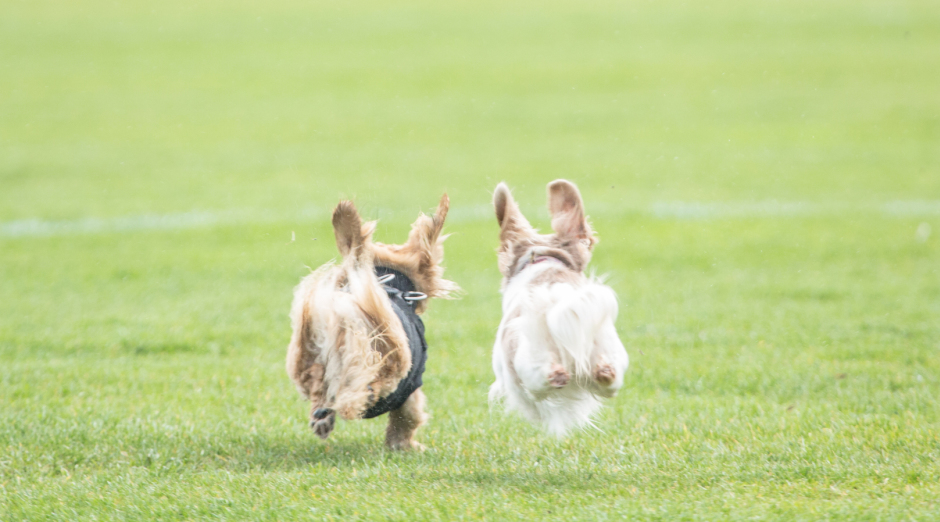
Exercise
- Keep your Dachshund active and well-exercised
- Don't over-exercise a puppy; gradually build its amount of exercise until it is 12 months old and its bones and muscles are fully developed
- Dachshunds over 12 months need a daily exercise regime that combines "on-lead" walking and free-running/playing
- Elderly Dachshunds will need less exercise than when they were younger
- Adapt the amount of exercise your Dachshund gets to keep it at an ideal Body Condition Score
In our survey, we asked owners to describe their Dachshund’s activity level as:
-
Highly active
-
Moderately active
-
Mildly active
-
Not at all active
We looked at dogs over the age of 3 that were highly or moderately active and they were half as likely to have suffered an IVDD incident as dogs described as mildly or not at all active.
This could either be a genuine effect of fitter dogs being less prone to IVDD, or affected dogs are now leading less active lives.
Dachshunds over the age of 3 that were only exercised by being given daily free running/playing in the garden were 1.8 times more likely to suffer IVDD than dogs that were taken for walks on and off the lead as well. Presumably, “proper walks” on and off the lead build more muscle-tone and better body condition than free-play in the garden.
Don’t over-exercise a young puppy; allow it to mature fully and for its bones and muscles to develop before expecting it to be able to go on long walks (a rough guide is 5 minutes of “formal, on-lead exercise” daily, per month of age, in addition to allowing free playing/exercise)
Once fully grown (over the age of 12 months), keep your dog well-exercised and in good body condition (well-muscled and not overweight)
A mixed exercise regime on-lead and off-lead will help build good muscle tone; they need to live their lives as “proper dogs” – remember their working origins, so they should be able to run and jump.
We all know that owning Dachshunds is habit-forming and one is never enough. The good news, from our survey, is that living with more than one also reduces the risk of your dog having back problems!
Dachshunds living with more than 1 other Dachshund, or living with other (non-Dachshund) dogs, had lower odds of IVDD than Dachshunds living on their own. Living with 2 or more other Dachshunds halved the odds compared with those living on their own. Those living with other breeds of dog also had a lower risk. Owning several Dachshunds possibly means they spend more time playing together and self-exercising than those who live alone.
More advice on the minimum exercise that a Dachshund requires from "You did what with your wiener?"


